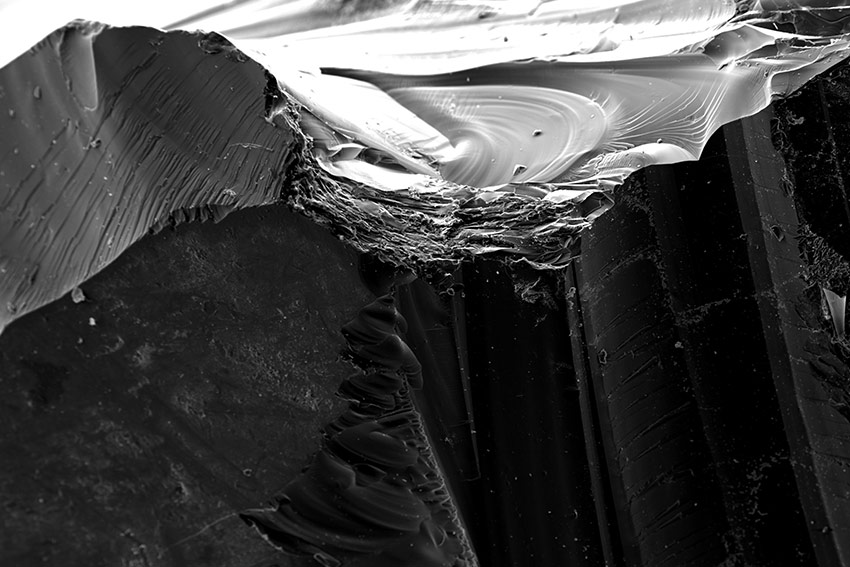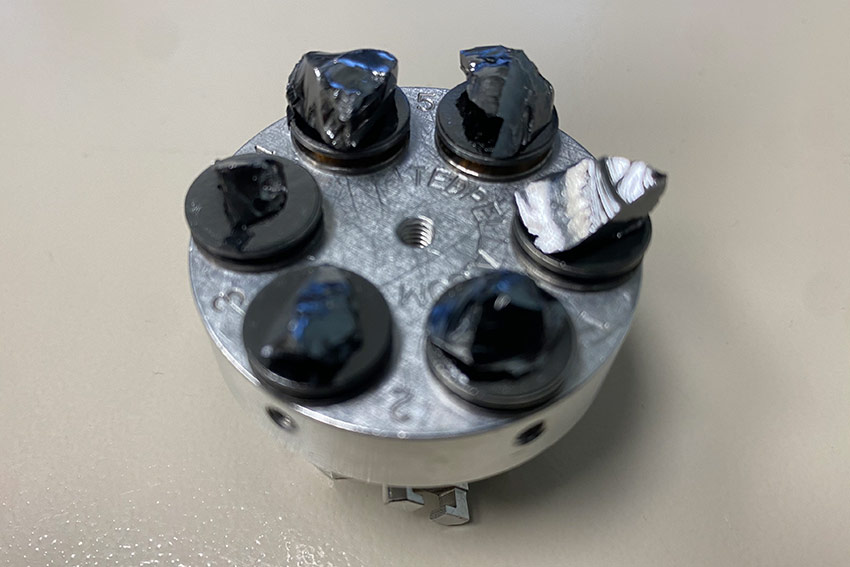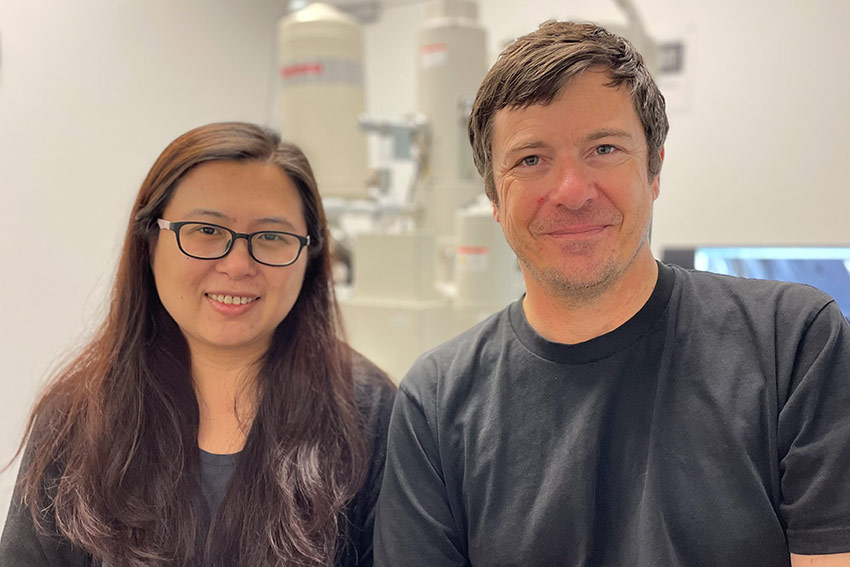Art meets science at AUT

An unlikely collaboration between the School of Future Environments’ Dr Clinton Watkins and Dr Yuan Tao of the School of Engineering, Computer and Mathematical Sciences is behind Depth of Field, a video and sound artwork currently on display at contemporary art gallery STARKWHITE.
The work by Watkins, a sound and video artist and Creative Technologies programme director who was recently promoted to Associate Professor, investigates the microscopic landscapes found on the surface of obsidian shards.

Working alongside Dr Tao, whose research expertise is in metallurgy and mechanical engineering, Watkins captured images of the obsidian using AUT’s scanning electron microscope (SEM.)
The state-of-the-art microscope imaged the obsidian samples using a beam of high-energy electrons, which interact with the sample’s atoms, producing information about its surface topography, composition, and other properties.
The SEM can also capture ultra-high-resolution images with magnifications of up to 800,000 times.
Combined with a selection of minimalist sound compositions, the images of the obsidian appear in Clinton’s artwork as landscapes on a microscopic scale - with the surface area captured being around half a millimetre.
Watkins says his fascination with obsidian spans back to childhood memories of seeing small shards of the glossy, black volcanic glass at his grandparents’ farm in Northland.
"It’s a hard, yet brittle and amorphous material that fractures with sharp edges,” Watkins says.
“In Aotearoa, obsidian has been used as a cutting, scraping and piercing tool by Māori, and today obsidian scalpels may be used in surgery when metallic blades can’t be tolerated,” he says.

For Clinton, working alongside Dr Tao in the SEM lab was a great experience.
“We had numerous discussions about the scanning process, and she taught me how to operate the SEM, which meant I could spend hours freely exploring and capturing imagery,” Clinton says.
Technological hardware plays a major role in Clinton’s practice, so to be able to use the SEM over a year long period was “a significant highlight with regards to the production of creative outcomes.”
For Dr Yuan Tao, working with an artist like Clinton was a change from the usual scientific projects.
“At AUT, the SEM is mostly used for studying the morphology and composition of materials – both metal and non-metal,” Yuan says.
“This could mean biological studies like taxonomy and microbiology, but It’s also used with geological samples like clay, rocks and minerals.”
Yaun has recently seen an increase in students from AUT’s schools of Art and Design and Future Environments using the SEM.
She says their work provides a different perspective to the images produced by the microscope.
“Looking at Clinton’s images felt like looking into space. They’re fascinating. In my work with geological samples, I’m usually focused on searching for specific types of minerals.
“Clinton's work, on the other hand, brings out the inner beauty of the rocks. I thoroughly enjoy collaborating with Clinton and hope we can work together again in the future,” Yuan says.
Depth of Field is on show at STARKWHITE, 94 Newton Road, Auckland, until 19 November. Gallery hours are 10am–5pm, Tuesday to Friday, and 11am–3pm Saturday.